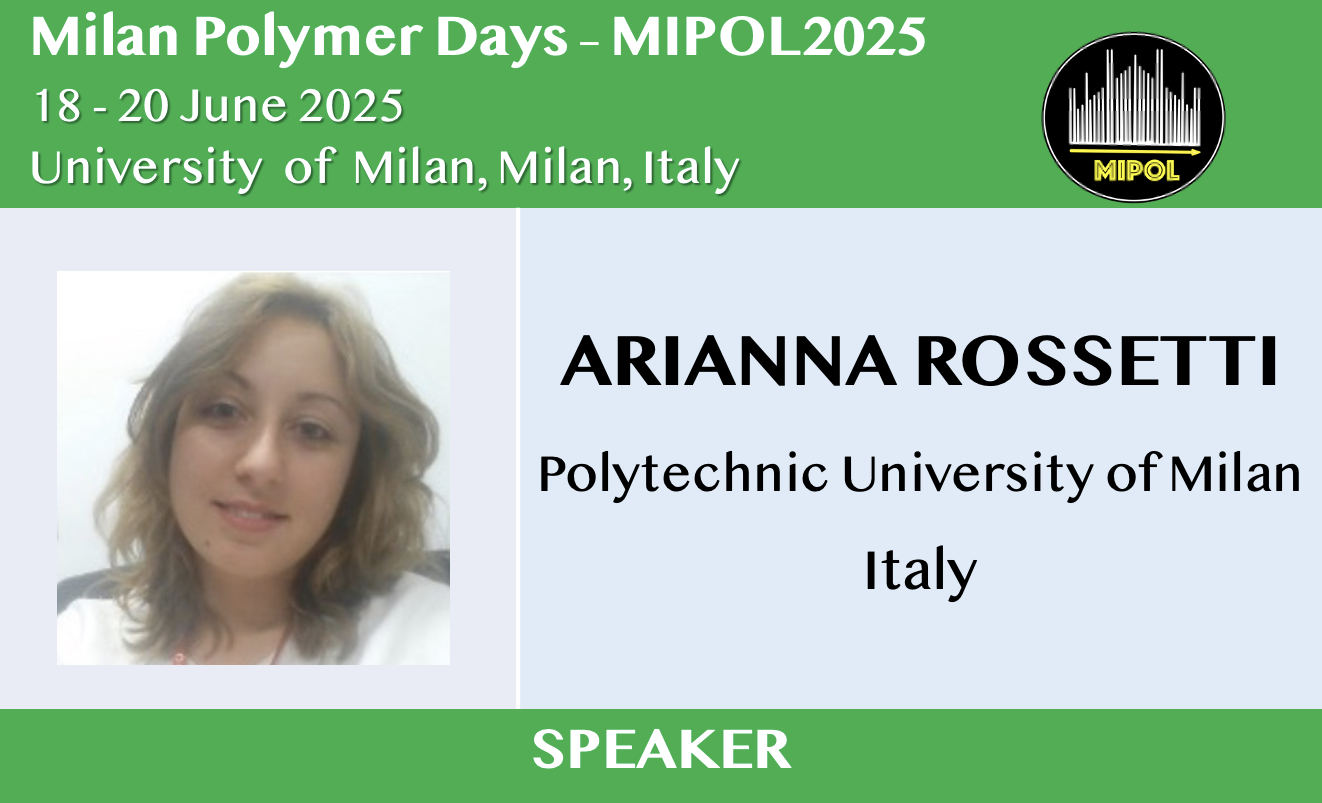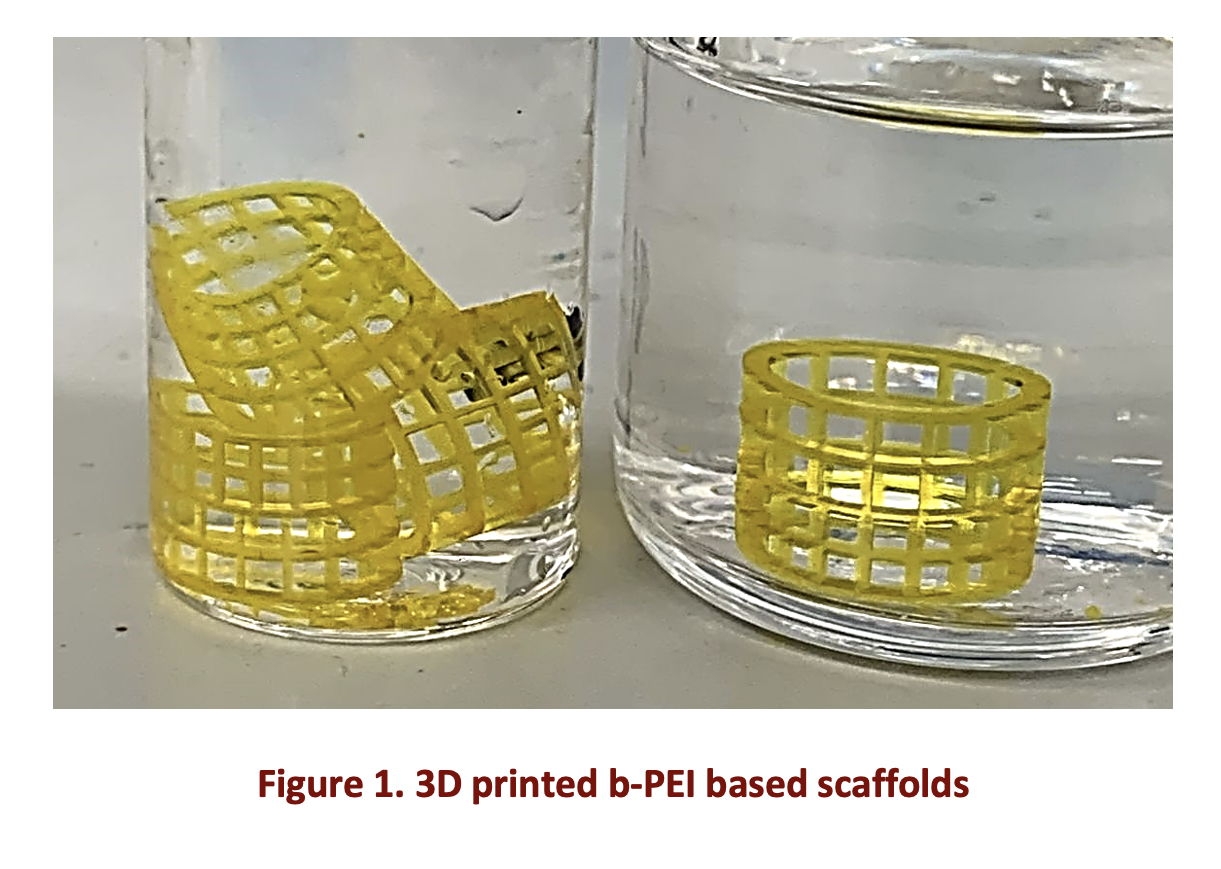Harnessing polyethyleneimine in 3D-printing for tunable heterogeneous catalysts
Abstract

Polyethyleneimine (PEI) is a family of polymers with interesting properties, mainly due to the presence of nucleophilic nitrogen atoms, that lead to their use in different fields, from gene delivery and drug release devices to environmental remediation tools and catalysis. In most cases, PEI is used as a grafting agent or as a support for catalytically active metals, whereas only few cases report its use in amine-catalysed organic transformations [1,2]. The main drawbacks concern PEI’s high viscous liquid state, complicated to dose, and its good solubility in lots of solvents, with a subsequent difficulty in separating PEI from the reaction mixture.
Hence the idea of using modified PEI as innovative material in a 3D printing process to craft a tunable in-flow reactor able to work as a heterogeneous catalyst. In this work, branched PEI (b-PEI) and polyethylene glycol (PEG) at different MW were reacted with methacrylic anhydride, obtaining polymers with various grafting degrees. Samples with different porosity were produced via photopolymerization during the printing process by using a Digital Light Processing (DLP) 3D-printer [3]. After an initial investigation aiming at finding the appropriate grafting degree on b-PEI, a printability screening of different blends has been carried out by designing cylinders with different porosity to obtain proper mechanical properties and stability. The mechanical resistance of the printed scaffolds was also tuned by varying the chain length of both polymers, to select the materials exhibiting optimal printing accuracy.
The feasibility of printing PEI-based materials with catalytic activity was demonstrated, as evidenced by successful applications in based-catalysed reactions. Leveraging the flexibility and reproducibility of 3D printing, this method lays the groundwork for crafting a customizable in-flow reactor for heterogeneous catalysis.

References
- F. Xie, X. Cui, X. Zhi, D. Yao, B. Johannessen, T. Lin, J. Tang, T.B.F. Woodfield, L. Gu, S.Z. Qiao Nature Synthesis, 2023, 2, 129.
- S. Zhang, P. Kang, S. Ubnoske, M.K. Brennaman, N. Song, R.L. House, J.T. Glass, T.J. Meyer J. Am. Chem. Soc. 2014, 136, 7845.
- J. Zhu, P. Wu, Y. Chao, J. Yu, W. Zhu, Z. Liu, C. Xu Chem. Eng. J., 2022, 433, 134341.

